Lens: Nikon Nikkor-O 55 mm f/1.2 m=1:5 (CRT)
Vintage: 1970's
Lens Mount: M39
Needed Adapters: M39 adapts fairly easily to most camera mounts by way of an adapter that is easily found on eBay. These adapters don't always work well when mounted directly on the camera - they just don't fit right. I use an M39 to T2 and a T2 to nikon adapter to mount this lens normally. To reverse this lens, you need a 52mm reversing ring. The problem is that the 52mm lens threads are not of a standard thread pitch, so a standard reversing ring won't work unless you cross-thread the adapter
Preferred Mounting: Normal for work below 1:1, reversed above 1:1.
Filter Thread: 52 mm non-standard thread.
Street Price: $500-$1000 in good used condition. Prices vary a lot online, shop around.
Controls: Aperture setting.
Aperture: 12 blades.
Basic Function: Requires a bellows to set focus and magnification
| Extension | Magnification | Working Distance |
| adapters | 0.28 | 189 mm |
| 25 mm | 0.76 | 64 mm |
| 5 cm | 1.92 | 55 mm |
| 9 cm | 2.68 | 47 mm |
| 13 cm | 3.45 | 42 mm |
| 19 cm | 4.54 | 39 mm |
| 19 cm + 25ex | 5.02 | 37 mm |
| Est. Focal Length: 53.2 mm | ||
Appearance:

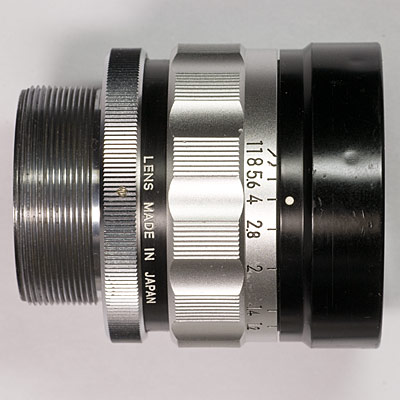
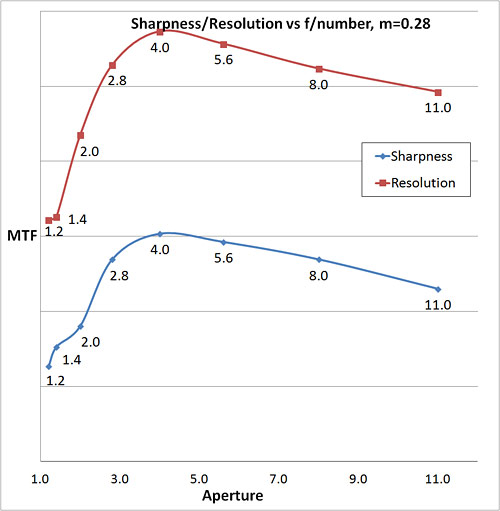 Resolution vs. Aperture:
Resolution vs. Aperture:
This lens is at its sharpest at f/4. The most detailed aperture is also f/4.
These are both good for the focal length.
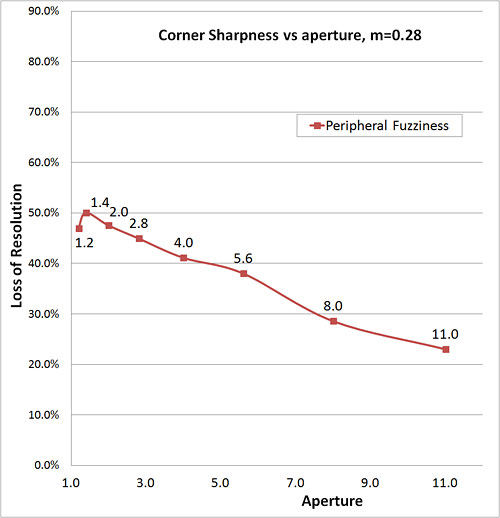 Corner Sharpness vs. Aperture:
Corner Sharpness vs. Aperture:
The corner sharpness isn't the greatest attribute of this lens. At the sharpest aperture, the corners are OK, but not great. The testing was performed at the lowest magnification that I could run it at, 0.28. This is somewhat above the magnification that this lens is made to run at. This is the lowest magnification that this lens can be run at without the lens impacting the mirror. Was this lens to made to work with a rangefinder?
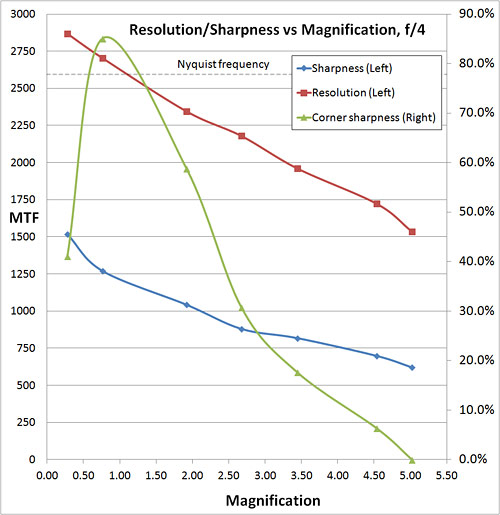 Sharpness and Resolution vs. Magnification:
Sharpness and Resolution vs. Magnification:
This lens produces sharp and detailed images across the macro magnification range in the center of the field.
The corner sharpness is OK at the lowest magnification (close to the 1:5 it is made to work at). With the lens mounted normally below 1:1, the corner performance quickly deteriorates as 1:1 is approached. Above 1:1, it is better to run this lens reversed. as the magnification rises above 1:1, the corner performance slowly improves to very flat at 5:1 (equivalent to 1:5 when reversed, so it should do pretty well there).
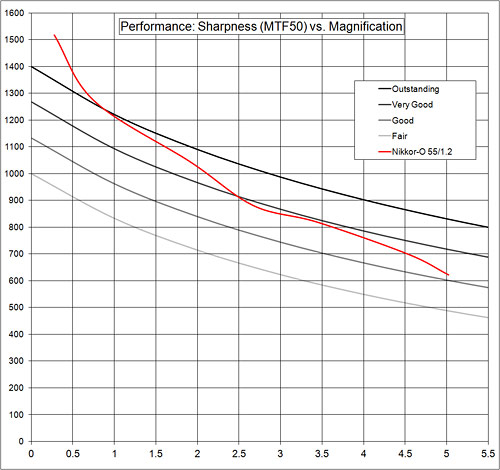 Performance: Sharpness vs. Magnification:
Performance: Sharpness vs. Magnification:
I have 4 lines that represent levels of performance from outstanding (top) to fair (bottom). This shows where this lens fits into the hierarchy that I have created.
The Nikkor-O 55mm shows sharpness performance that varies from outstanding at the lowest magnification to good at the highest magnification.
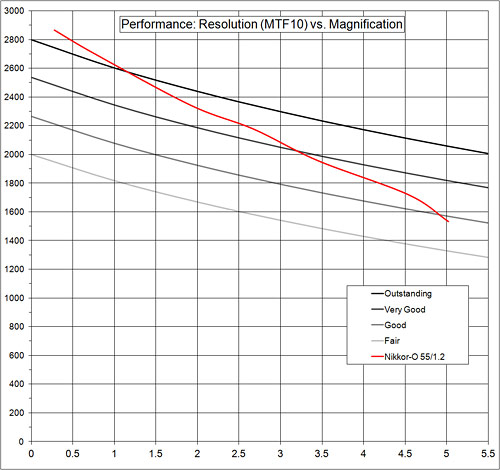 Performance: Resolution vs. Magnification:
Performance: Resolution vs. Magnification:
I have 4 lines that represent levels of performance from outstanding (top) to fair (bottom). This shows where this lens fits into the hierarchy that I have created.
The Nikkor-O 55mm shows resolution performance that varies from outstanding at the lowest magnification to fair/good at the highest magnification.
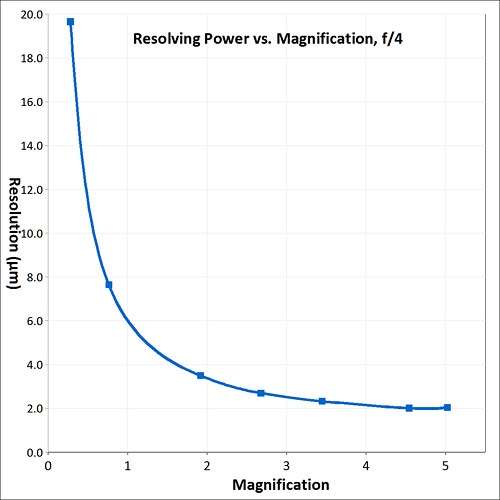 Resolving Power vs. Magnification:
Resolving Power vs. Magnification:
This graph represents the smallest details that are able to be resolved by this lens at various magnificaitons. If the number doesn't get smaller as the magnification rises, there is little benefit to going up in magnificaiton with this lens. This situation is also called empty magnification.
Good resolution, although losing some steam above 3:1.
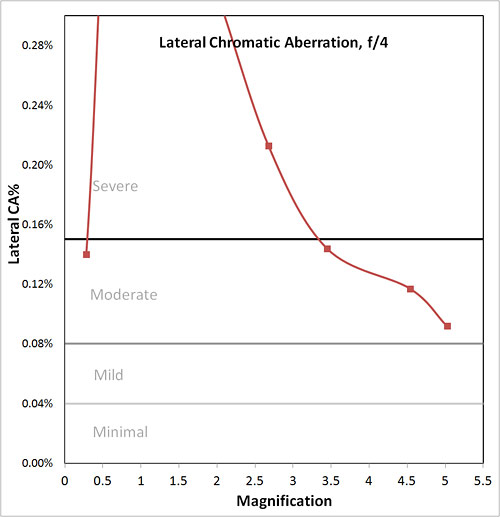 Chromatic Aberration:
Chromatic Aberration:
This lens show mild color fringing in the center (about 0.11 - 0.50 pixel) and moderate to severe on the periphery (the curve goes off the chart to about 0.50%).
There is mild axial CA on out-of focus details (see image below) as shown by a slight green/cyan fringe on the left and a slight red fringe on the right of the image.
Longitudinal CA:

Image Contrast: Image contrast is not great, at least partially related to flare.
Flare: This lens does show quite a bit of flare, probably associated with the age of the lens and old lens coatings. The flare is more of a general loss in contrast. It can be improved by putting dark material around the object being photographed to limit bright reflections. I use a small piece of velvet.
Distortion: This lens shows no significant distortion during testing.
Image Samples:
About 0.76:1 magnification, f/4, resized:

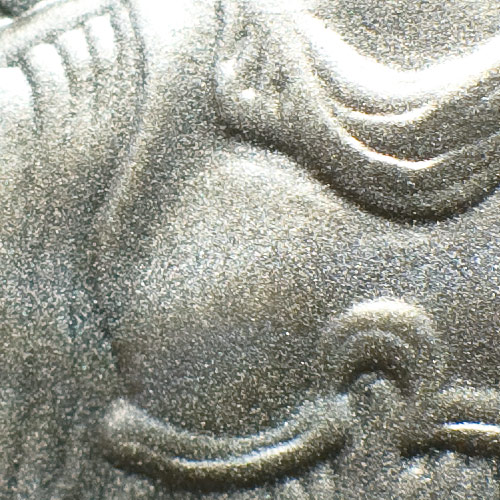 Pixel level crop from the image above:
Pixel level crop from the image above:
Very good pixel level detail in the center. The corners are quite fuzzy on the above image.
About 5:1 magnification, f/4, stack of 25 images, resized:
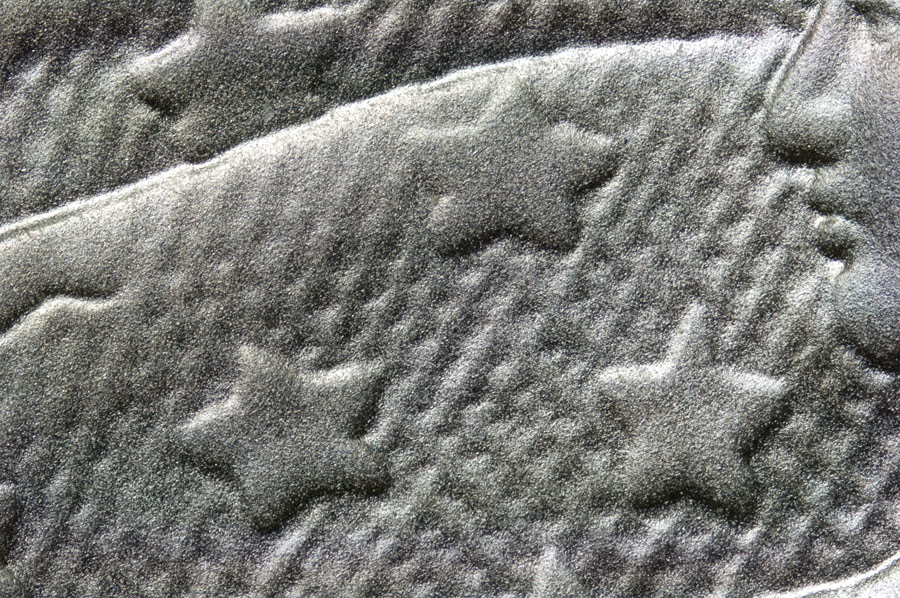
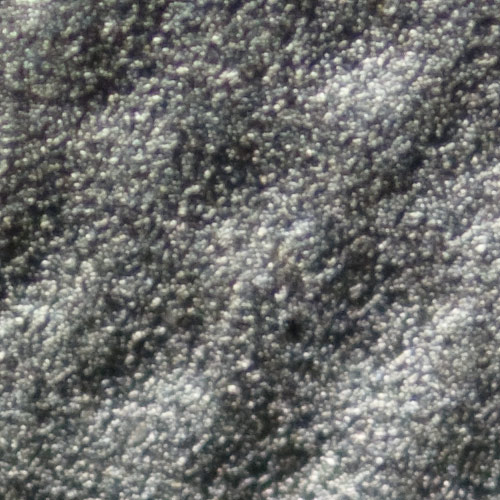 Pixel level crop from the image above:
Pixel level crop from the image above:
There is good pixel level detail, no problems.
Conclusion:
This is a lens that is not ideal for most macro work. The first problem is that you can't even use it on a dSLR at the magnification it is made for, 1:5. The lowest I could run it at was about 1:4, mounted directly on the camera. Performance is pretty lackluster anywhere around 1:1. I think that this lens was probably made to work on a rangefinder? This lens is typically pretty expensive, more so than most other bellows lenses. The sharpness and resolution are good in the center across the magnification range. The field flatness varies widely, from poor to very flat, with the poor areas being in the prime macro magnification range. The lateral chromatic aberration is moderate to severe across the board, again worst in the prime macro regions. There is minimal longitudinal CA present on out-of-focus details. The contrast is not particularly good, at least partially related to flare. This can be improved by masking the areas around the photographed object with dark fabric or paper. Working distance is OK.
Overall this lens has more negatives than positives and I would choose something different for macro work. If I were looking for a lens in this focal length range, I would stick to a decent enlarging lens or bellows lens- better performance, much less expensive.
Note: This test applies to the 1:5 version of this lens. Not sure if the ones that are not marked as such will perform better or not.